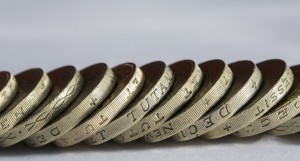 by Gino D’Alessio
by Gino D’Alessio
UK Economy Showing Signs of Contraction
The UK has seen a series of data in recent months that has created cause for concern for continued economic expansion. The Governor of the Bank of England has had to reverse his calls from last year for a possible raise in interest rates. Something he has reiterated in his latest speeches after the monetary policy meetings in January and February. International growth and the global economy were showing risks to the downside. Inflation has also remained low and did not rise as had been expected in the summer or last year.
Breakdown of UK economic data
GDP growth rate is a healthy 1.9% & unemployment is falling, latest data showed it stood at 5.1%, which is getting closer to the 4.8% unemployment level experienced in 2004. That year saw the lowest level of unemployment for the past 15 years, GDP growth rate that year was 2.5%. So it looks like we are headed in the right direction, at least when looking at those two metrics.
Unfortunately there are other signs coming from different data that indicate the economy may not be heating up so quickly. One of the biggest clues to an expanding economy is inflation. For 2015 inflation was 0% with many months at negative levels, only the last 2 months of data show inflation as turning positive again. Producer price change, an indicator of inflationary pressure, has been negative throughout 2015. Probably the biggest factor in that data is the fall in the cost of energy, which may continue to stay low for some time.
There are also signs of contraction due to a lower rate of economic activity, often measured by looking at production and consumer consumption. Which are showing signs of weakness given the protraction of negative data over the past several months.
Industrial production has turned negative and fell for a second month by 1.1% after falling the previous month by 0.8%, the MoM average for 2015 was a mere -0.033%. Manufacturing production has also been low, latest data was -1.7% which was the sixth consecutive decline, bringing the YoY average to -0.183% for 2015.
Retail sales have also been falling steadily over the past 4 months, in September last YoY data reached a peak of 6.3% to gradually fall to 2.6% for the latest data. Monthly data however shows that retail sales fell by 1% for December 2015 alone.
Global outlook for Growth
What adds to the overall meek outlook for the UK are the general conditions of the global economy. The US has begun to show signs of weakening with lower than expected job creation levels within February’s figures. The US is also seeing a reduction in retail sales and decreases in durable goods orders as well as industrial production. All signs of a reduction in economic activity.
But global woes do not finish there. China, which is the world’s second largest economy, is without doubt seeing GDP increase at a slower rate. PMI data is well below 50, which indicates a contraction in economic activity and GDP growth has fallen from more usual levels around 10% to 6.8%. That does not seem such a bad number, even for a developing economy, but nevertheless it is still a stark reduction from what we have been used to. However what is probably concerning the markets even more are fears that the state controlled statistics may not be accurate, as the figures that are being released may not represent the true extent of the decline in GDP.
China weakness can only reflect upon other economies within the Asia Pacific region and across the world. In Europe the outlook has also turned bleak, considering Germany and France are Britain’s second and third largest importers that cannot be a good sign. The power house Germany is beginning to look like it may also falter given the current global economic narrative. Industrial and manufacturing production hit new lows in the last round of data, with reductions of 2.2% and 2.6% respectively.
The markets are certainly showing their worries about the economy and the outlook for the future. The FTSE has gone from its 2015 high in April 27th, at 7122.70 to current levels below 5700. The Pound sterling has also taken a beating against most major currencies, in particular against the Euro, where it has lost nearly 6% from the beginning of the year. This coincides with most major stock markets being rattled over the past months and in particular since the beginning of the year.
In conclusion then, any green shoots of recovery in the UK economy are currently being outweighed by other factors, so the prospects for growth in 2016 remain small.
| Trade EUR/GBP at 24Option |  |
Read More; What will impact Oil Prices in 2016?
Review our Regulated Broker list
 by Gino D’Alessio
by Gino D’Alessio